The seventh-generation BMW 5 Series saloon has been revealed, featuring an evolutionary exterior design, an updated interior, a broadened engine line-up and semi-autonomous driving functions.
We've driven a pre-production version of the 2017 5 Series
Sales of the new mid-sized executive four-door begin in February following the car’s public debut at the 2017 Detroit show.
Headlined by a rapid M550i xDrive M Performance model, the latest incarnation of the 5 Series sports an appearance that's not as removed visually from that of its predecessor as previous new 5 Series models have been.
The car takes influence from the new 7 Series, adopting a subtly sharper form than that of the old 5 Series with tauter surfacing and more finely honed crease lines along the flanks, including an additional feature line running along the top of the front and rear doors.
Key elements, such as the kidney grille and Hofmeister kick within the C-pillars, have been reinterpreted with a more contemporary form. All models get LED head and tail-lights as standard
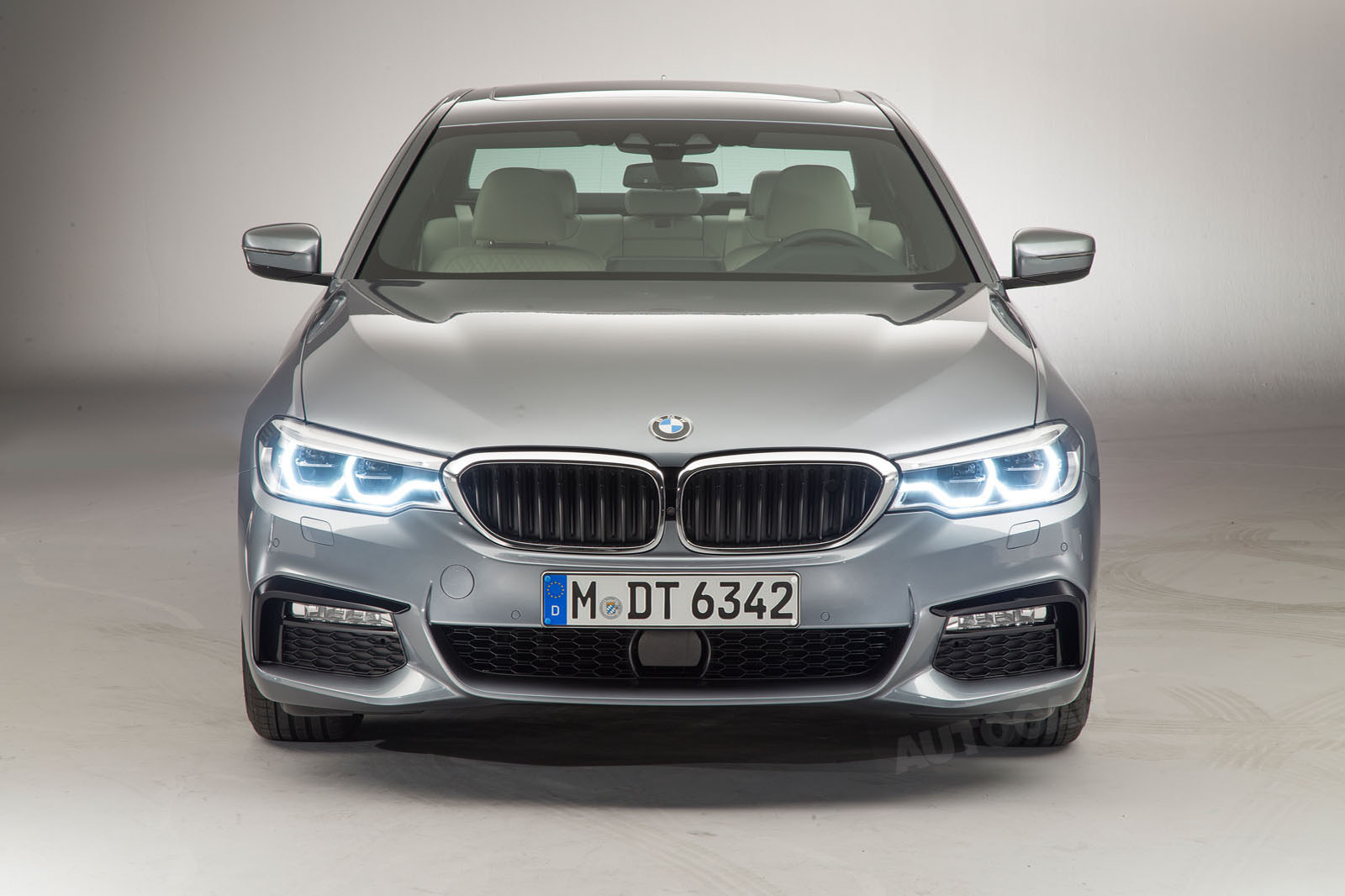
According to project director Johann Kistler, the decision to retain a familiar appearance rather than opt for an all-new look was based on feedback from customers and a record 2.1 million sales for the previous-generation car.
Kistler said: “In the final choice of designs we had three proposals. The production car is the middle of those three – we also had a more conservative proposal and one that pushed the boundaries more.”
The new 5 Series has grown in size, but only slightly. Length has increased by 36mm to 4935mm, width grows by 6mm to 1868mm and height increases by 2mm to 1466mm.
The wheelbase is 7mm longer than that of its predecessor at 2975mm, while the track widths of the 520d are up by 5mm at the front and 3mm at rear at 1605mm and 1630mm respectively.
For context, the latest Mercedes-Benz E-class stretches to 4880mm in length, 1850mm in width and 1470mm in height.
Thanks to the increases, the 5 Series' interior space is improved, notably rear leg, shoulder and head room. There’s sufficient space for five adults on newly developed seats front and back. Crucially, the rear bench has been reshaped to provide a more defined centre seat, rather than being shaped primarily for the two outer seats, although a wide centre tunnel continues to rob foot space at the base of the centre rear seat.
Boot capacity is also up, by 10 litres to 530 litres, although that's still 10 litres shy of the Mercedes-Benz E-class saloon.
A comprehensive aerodynamic development program has netted the new 5 Series a class-leading drag coefficient of 0.22. This has been achieved with the help of active grille elements with louvres that open when more cooling air is needed but otherwise remain closed to smooth out airflow.
The new BMW will be launched in saloon guise, before a Touring model joins the range in the second half of 2017.
Unlike today’s line-up, the successor to the 5 Series GT, which is already undergoing testing in prototype form, will have more individual styling. Sources suggest it will adopt the name BMW 6 Series GT and indirectly replace the slow-selling 6 Series Gran Coupé when it arrives in 2018 – a move that hints it will also become more expensive.
The new 5 Series adopts BMW’s new Cluster Architecture (CLAR) platform structure underneath its predominantly aluminium body. The structure incorporates more aluminium, magnesium and titanium within its floorplan, bulkheads and connecting nodes than the platform of the previous 5 Series.
BMW says CLAR, along with other weight-saving measures, such as a lighter wiring loom, have resulted in a reduction of the 5 Series's kerb weight by up to 100kg, depending on the exact variant.
The engine line-up largely mirrors that of the outgoing model, with a combination of BMW’s latest-generation B48 four-cylinder, B58 six-cylinder and N63 V8 petrol units alongside B47 four-cylinder and B58 six-cylinder diesels.
Among the confirmed petrol engines is a turbocharged 3.0-litre six-cylinder unit, making 248bhp in the 530i and 335bhp in the 340i.
They will be joined in March by an updated version of BMW’s turbocharged 4.4-litre V8 in the initial flagship 550d xDrive M Performance model.
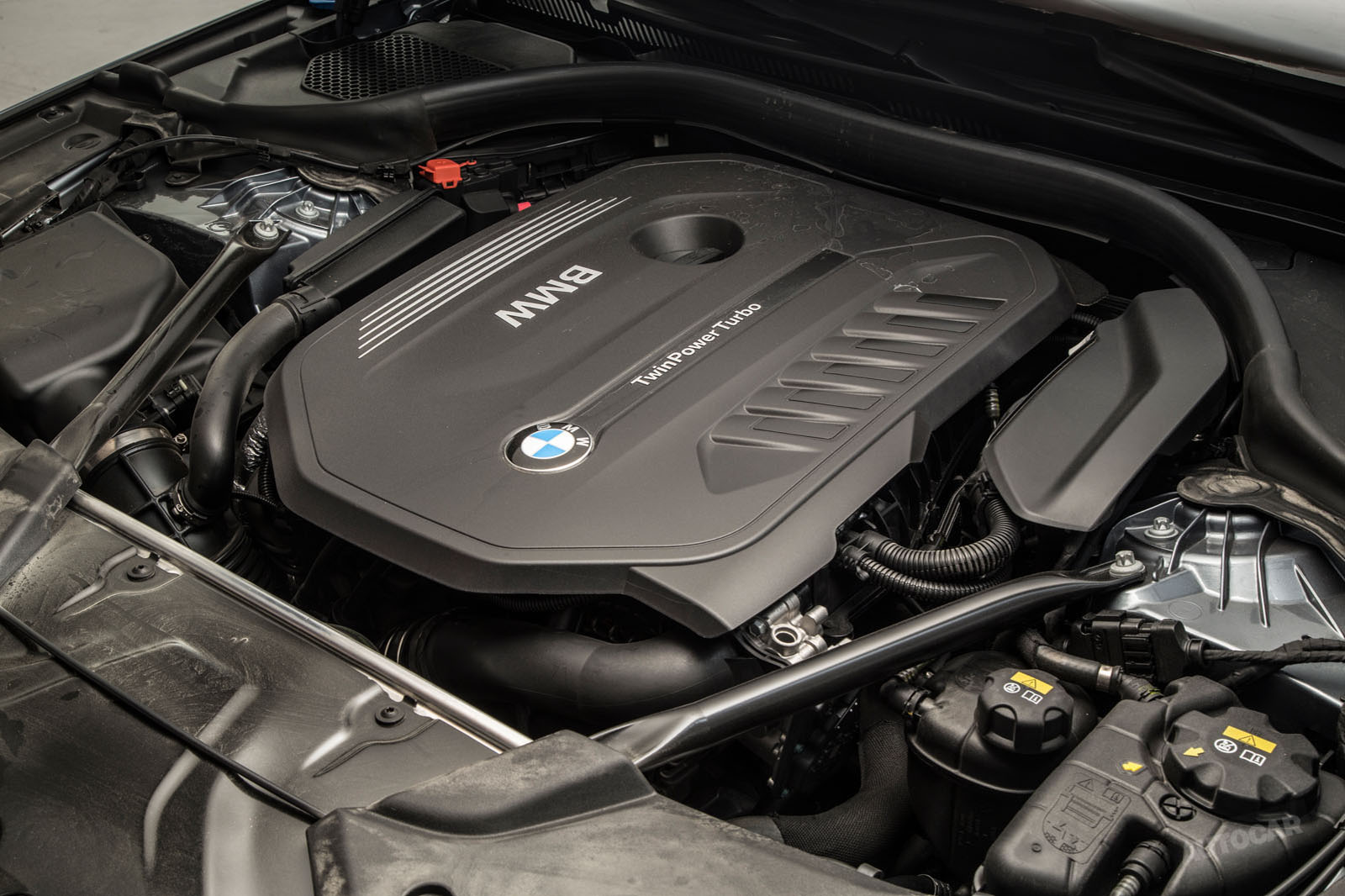
Set to provide stiff competition to the recently launched Mercedes-AMG E 43 and Audi S6, this M Performance model has 455bhp 479lb ft, giving it a 0-62mph time of just 4.0sec and a 155mph top speed. Claimed economy is 31.7mpg, with CO2 emissions of 204g/km.
For the diesel line-up, the 518d, 520d, 520d Efficient Dynamics and 525d models will receive BMW’s turbocharged 2.0-litre four-cylinder unit:.
The 520d will be available from launch, with the same 188bhp and 295lb ft as the model it replaces. Its 0-62mph time is 7.6sec, while top speed is 148mph. Fuel economy has risen by 6.1mpg to 68.9mpg and CO2 emissions improve by 12g/km to 107/km in six-speed manual guise.
Shortly after launch, the 520d will be joined by an even more frugal 520d EfficientDynamics model said to return a class leading 72.4mpg and 102g/km of CO2.
Ranged above these traditional volume-selling diesels is the 530d, which uses a 261bhp version of BMW’s turbocharged 3.0-litre six-cylinder diesel engine. It will be complemented later on by the 535d-replacing 540d, which uses the same engine tuned to 316bhp.
A more highly developed version of BMW’s six-cylinder diesel will appear in a new four-wheel-drive 550d xDrive M Performance model. The quad turbocharged 3.0-litre unit delivers 395bhp and 560lb ft - up from the older tri-turbo unit’s 381hp and 545lb ft – but BMW is holding back on its performance details until closer to launch during the latter half of 2017.
Also planned to reach the UK by the second quarter of 2017 is a successor to the 535i ActiveHybrid, with plug-in capability and a claimed all-electric range of up to 28 miles at speeds limited to 87mph.
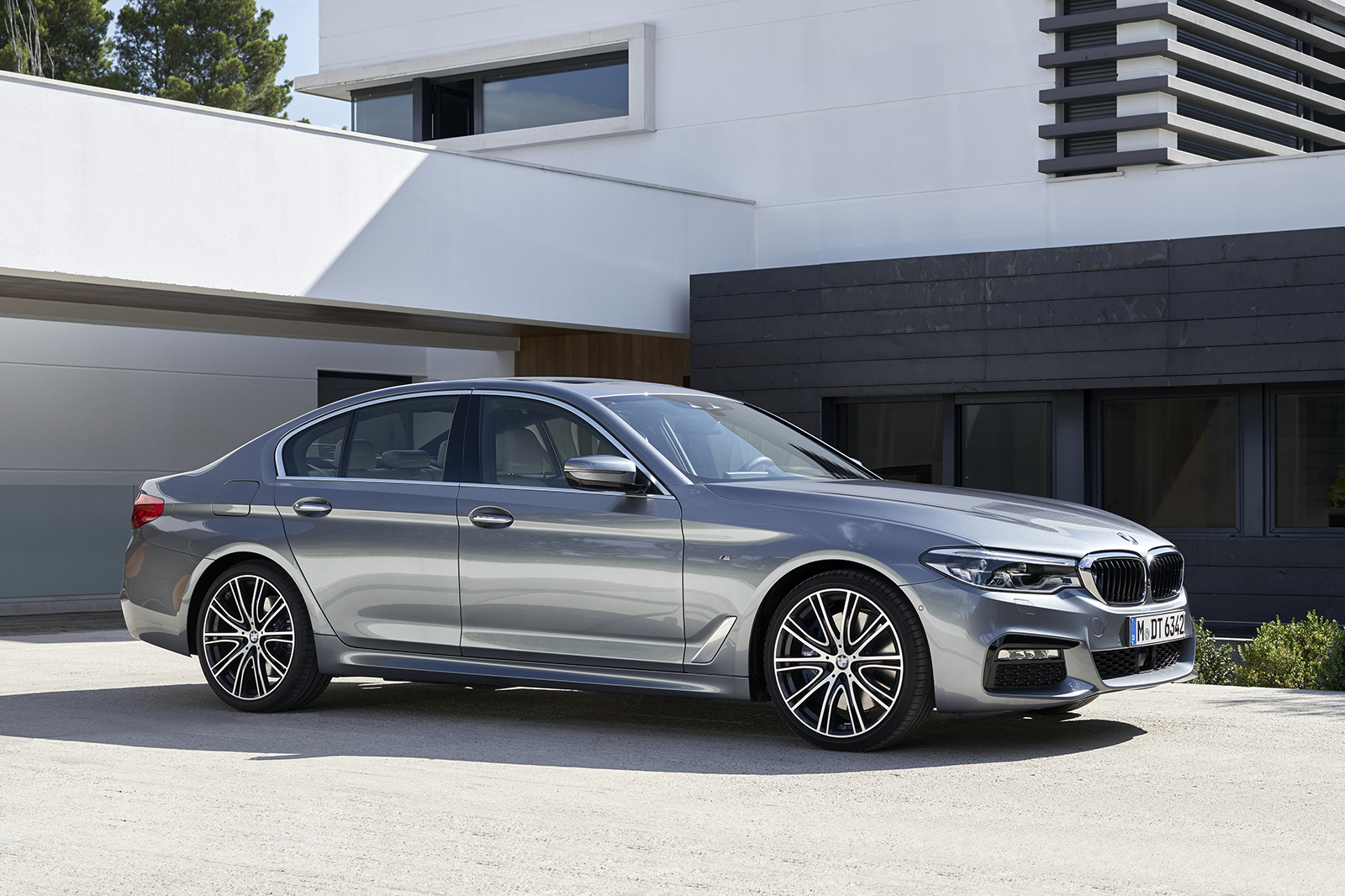
Badged as the 530e iPerformance, BMW’s latest hybrid uses a detuned version of the driveline found in the X5 xDrive40e, with a turbocharged 2.0-litre four-cylinder petrol engine and an electric motor delivering a combined output of 248bhp and 310lb ft of torque. It boasts a 0-62mph time of 6.2sec together with claimed 141.2mpg fuel consumption and 46g/km CO2 rating.
At the top of the range is the new BMW M5. Expected to make its debut at the 2017 Frankfurt motor show, it will challenge the likes of the Audi RS6, Jaguar XF R and Mercedes-Benz E63 with a lightly revised version of the outgoing model’s twin-turbocharged 4.4-litre V8 petrol engine developing a similar 603bhp as the recently announced M5 Competition Edition model, which acts as a swansong model for the sixth-generation 5 Series.
In keeping with tradition, the M5 will continue to be offered exclusively in saloon guise, however, BMW’s long time partner Alpina is developing an alternative B5 Touring model featuring its own taken on the twin turbocharged 4.4-litre V8 petrol engine with over 600bhp.
Lower end 5 Series models will continue to come with a standard six-speed manual gearbox, with higher end variants set to receive an updated version of its predecessors eight-speed automatic. The new M5 will continue to be alone within the line-up in offering a seven-speed dual clutch transmission. Selected models, including the popular 520d, will also receive optional xDrive four-wheel drive.
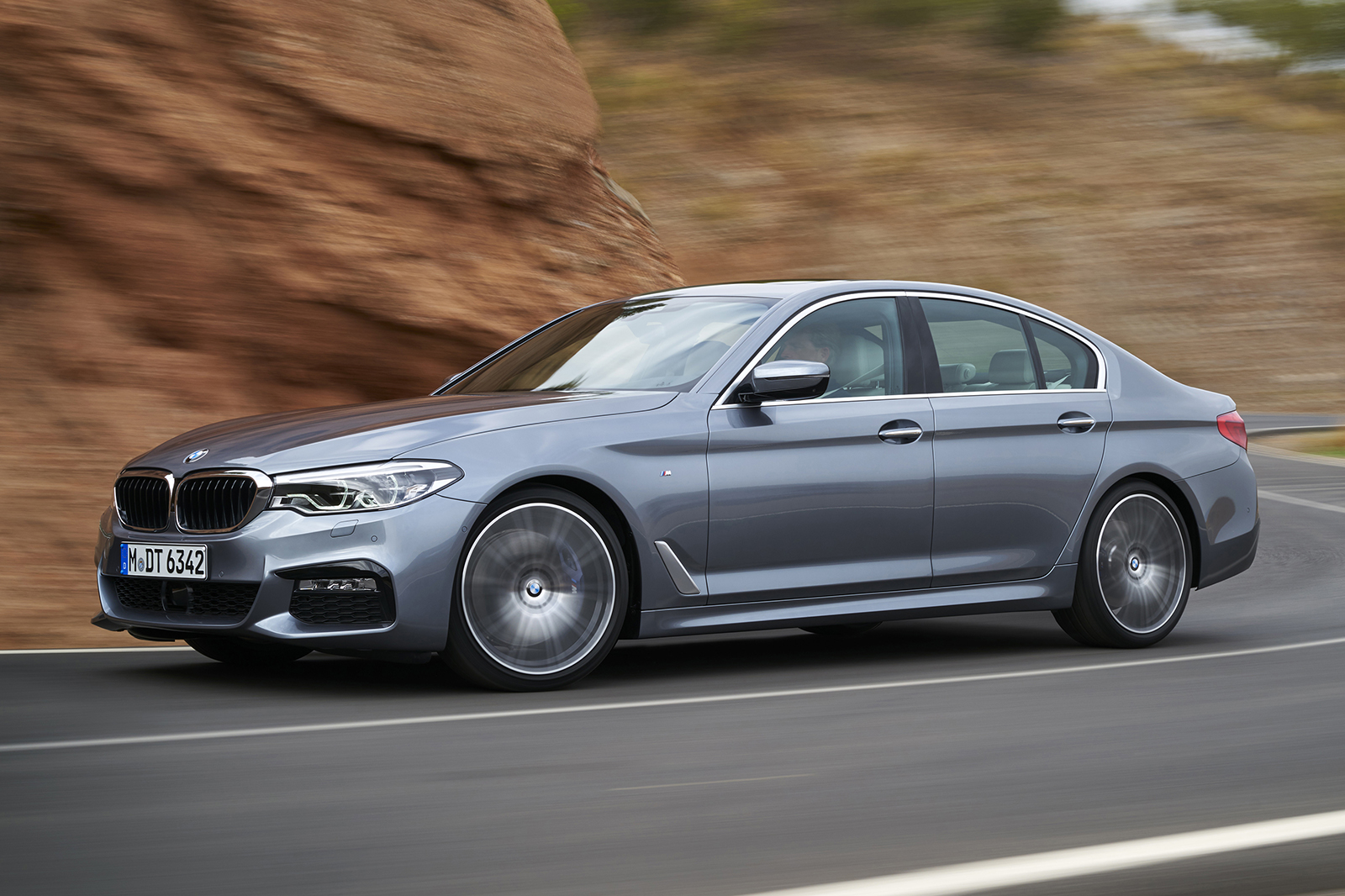
In addition to its weight-saving advantages, the CLAR structure also gives a significant increase in torsional rigidity.
BMW has used the increasea in stiffness to hone the suspension of the 5 Series, providing it with a revised front double wishbone design with a greater number of aluminium components for lower unsprung weight.
At the rear, the five-link set-up has been redesigned with studier mounting points and lighter aluminium components to provide more controlled wheel movement, improved toe-in properties and greater isolation from bumps.
Four versions of the new suspension will be available: a standard set-up with fixed-rate dampers, a firmer sports tune with reduced ride height, a variable damper system and a combination of variable dampers with electronically operated active anti-roll bars.
Oddly, given that it features in the Audi A6 and Mercedes-Benz E-class, BMW has decided not to make air suspension available on the new 5 Series, suggesting the revised steel spring set-up provides sharper dynamics in combination with a vastly improved ride quality.
Additionally, buyers will be able to combine the xDrive four-wheel drive system with BMW’s active four-wheel steering system, which provides countersteer to the rear wheels at lower speeds around town and parallel steering at higher speeds on the open road.
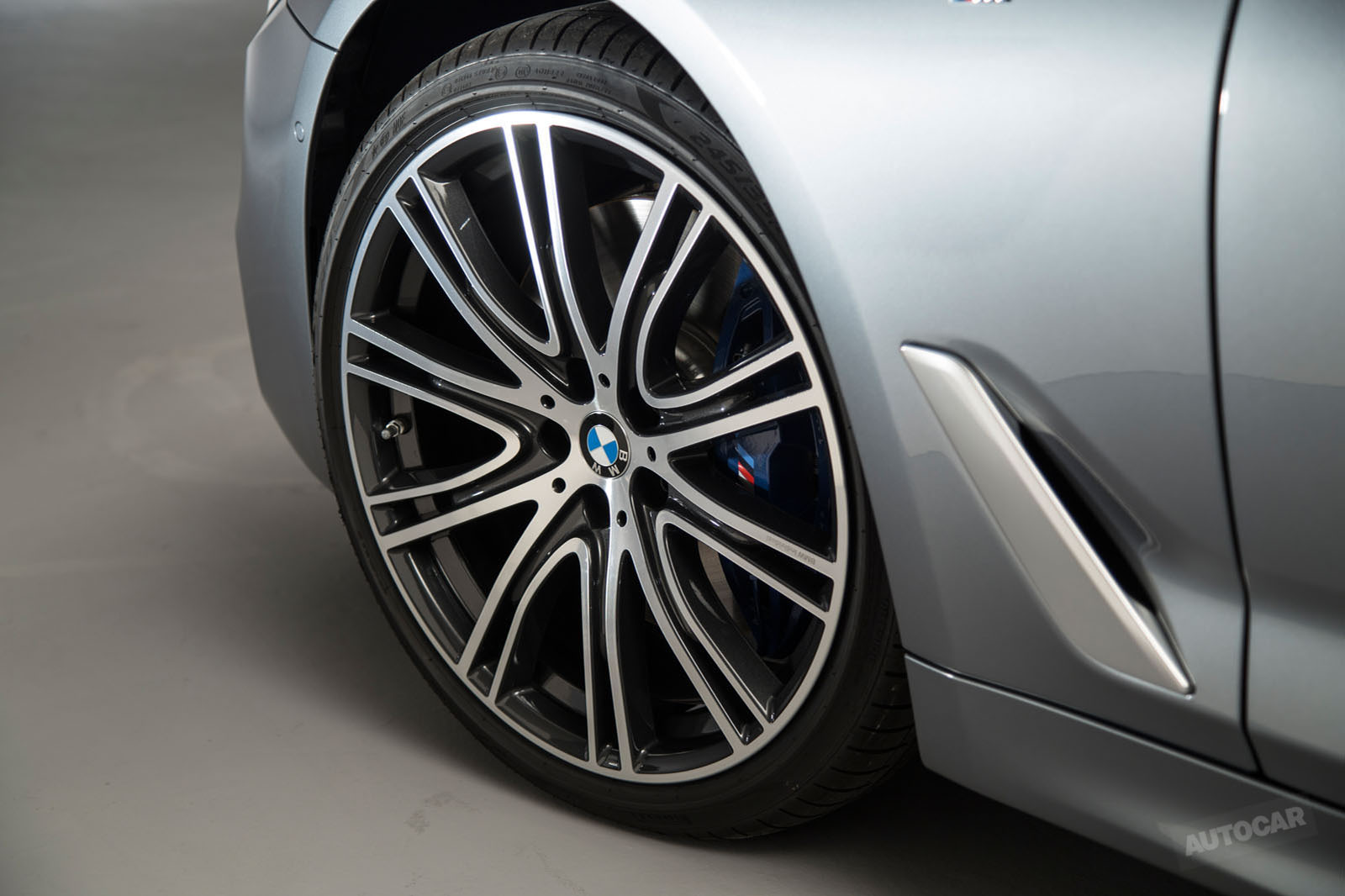
An earlier pre-production test drive of the new 5 Series has revealed the new BMW to offer great poise and impressive agility, while the four-wheel steering system provides excellent feedback and constant weighting over a wide range of lock.
The new 5 Series features various autonomous driving functions to match those by offered by Mercedes-Benz on the latest E-Class. Among them is a hands-off function that allows the new saloon to follow the car in front in traffic, stay within its lane at speeds up to 130mph and even change lanes at speeds between 44mph and 112mph to overtake a slower-moving car if prompted to do so with the use of the indicator.
The new 5 Series is also able to communicate with other BMWs via a so-called ‘car-to-x’ communication system for added safety. For example, if heavy fog makes it necessary to switch the fog lights on, the new BMW is able to warn other cars and their occupants that driving conditions in the area are hazardous.
There’s sufficient space for five adults on newly developed seats front and back. Crucially, the rear bench has been reshaped to provide a more defined centre seat, rather than being shaped primarily for the two outer seats, although a wide centre tunnel continues to rob foot space at the base of the centre rear seat.
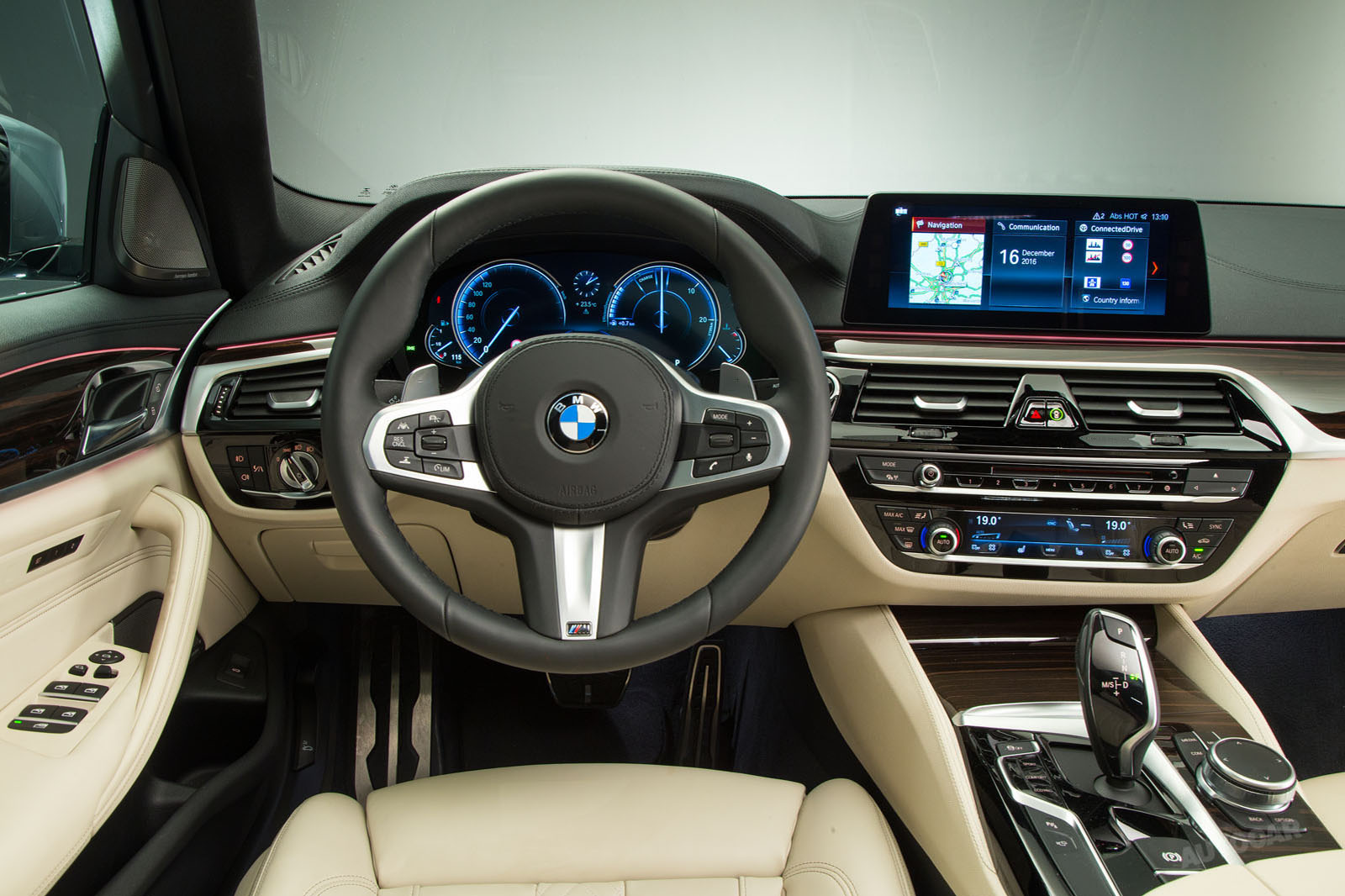
p front, the dashboard is similar to that of the sixth-generation 7 Series, with digital instrument graphics and high-grade materials providing an upmarket look and feel. The centre console is more heavily angled towards the driver than in the 7 Series in order to emphasise the model’s driver focus.
A free-standing 8.7in central monitor replaces the previous central screen through which the infotainment functions are accessed.
Placed more easily within reach than that of the old 5 Series, it offers a combination of iDrive rotary controller, gesture control and a voice control system that recognizes conversational speech rather than specific word commands. Optional is a larger 10.2in monitor as part of a so-called Professional package.
The latest version of BMW’s iDrive provides customisable on-screen menus allowing the creation of a home page displaying the most commonly used functions. Among a long list of driver assistance system is a new speed limit assist function, which allows speed limits to be incorporated into the standard dynamic cruise control.
Prices for the new 5 Series are yet to be confirmed, but it is expected to cost marginally more than its predecessor on a model-for-model basis, although BMW has confirmed that it will come with greater levels of standard equipment than the old model in the UK.
Production of the new 5 Series will take place at BMW’s Dingolfing site in Germany, with additional volume produced at facilities in Graz, Austria. A long-wheelbase Li saloon version, due at next year’s Shanghai motor show, will be assembled in Shenyang, China.






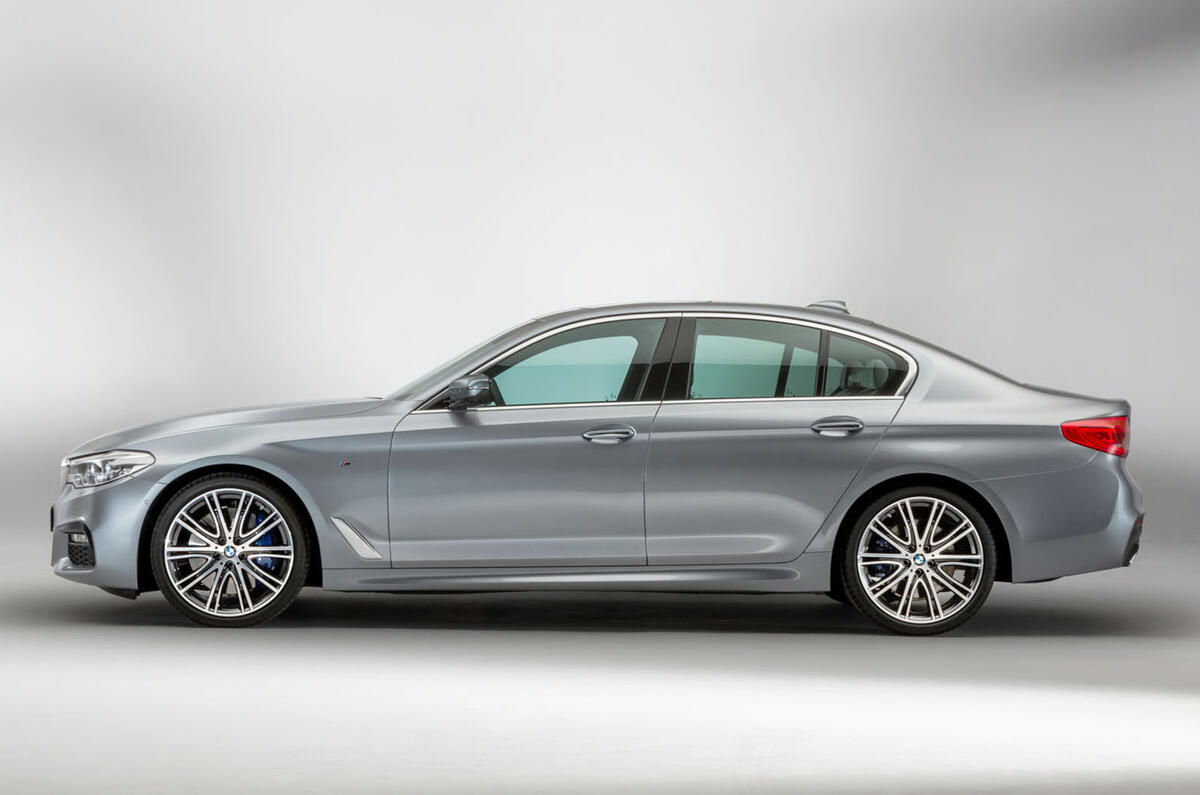




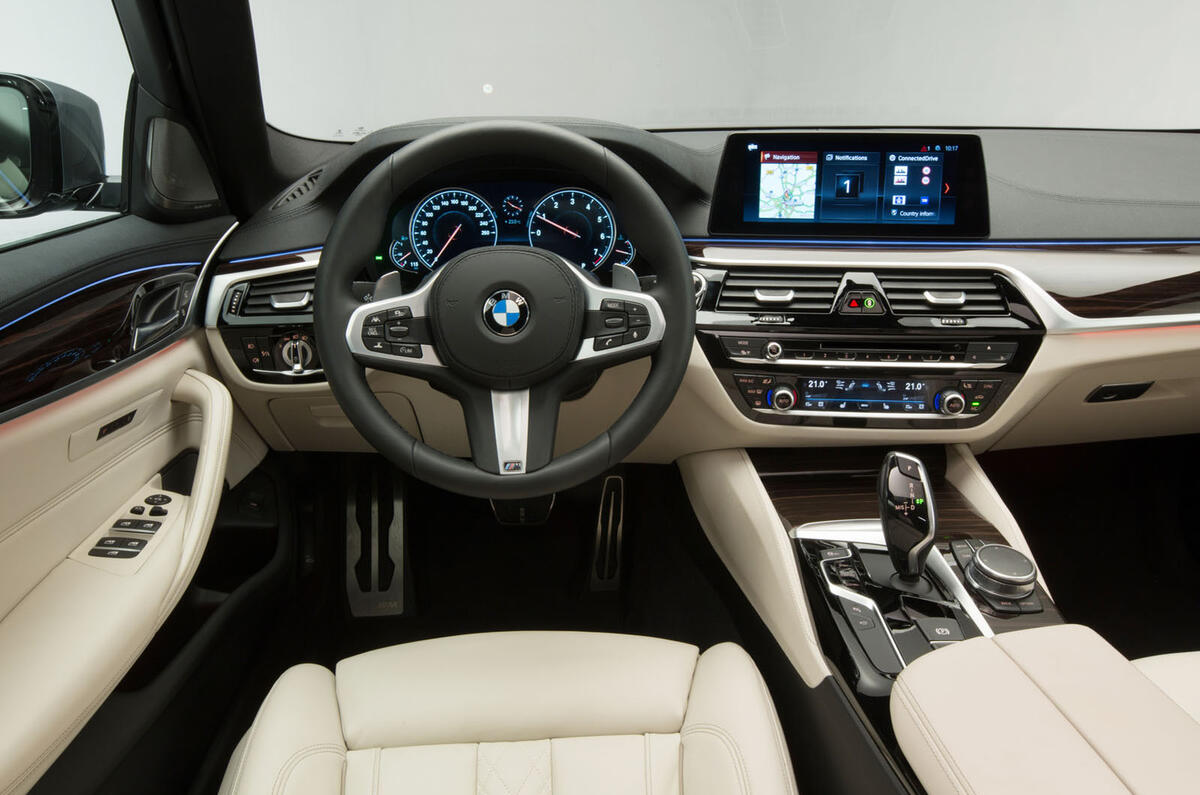
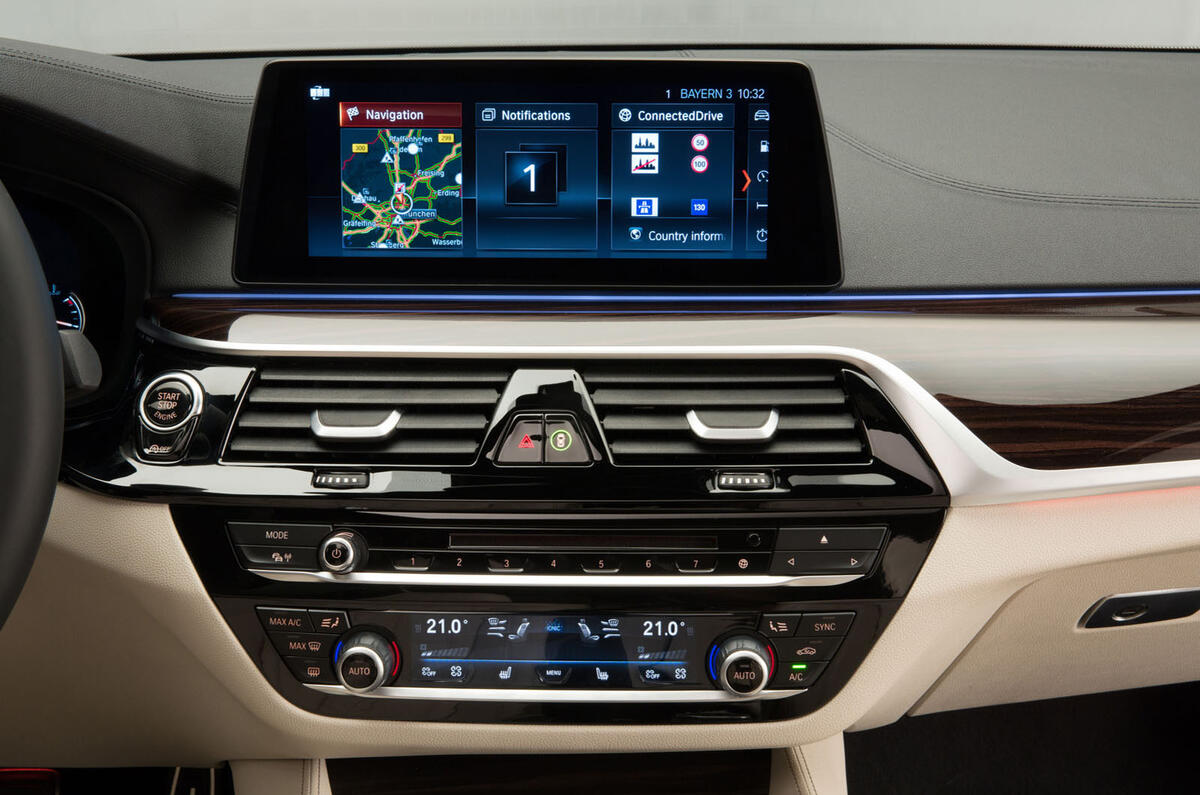









































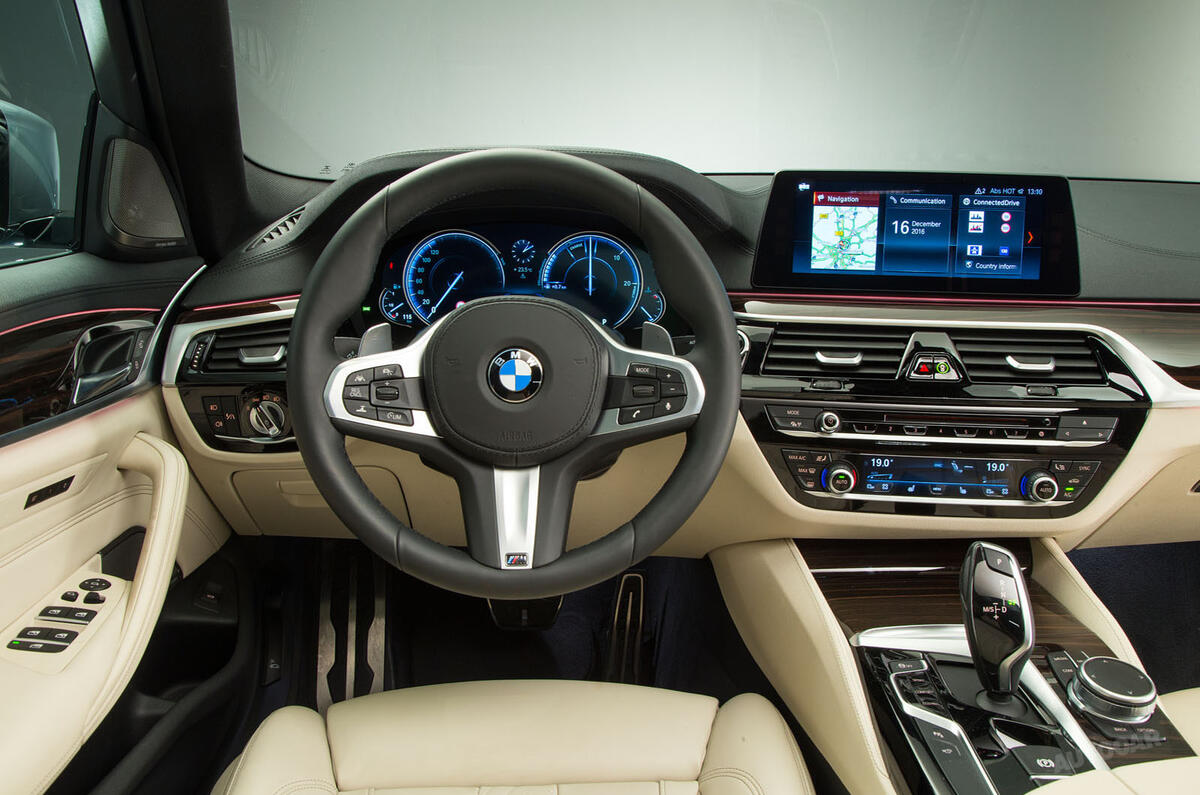






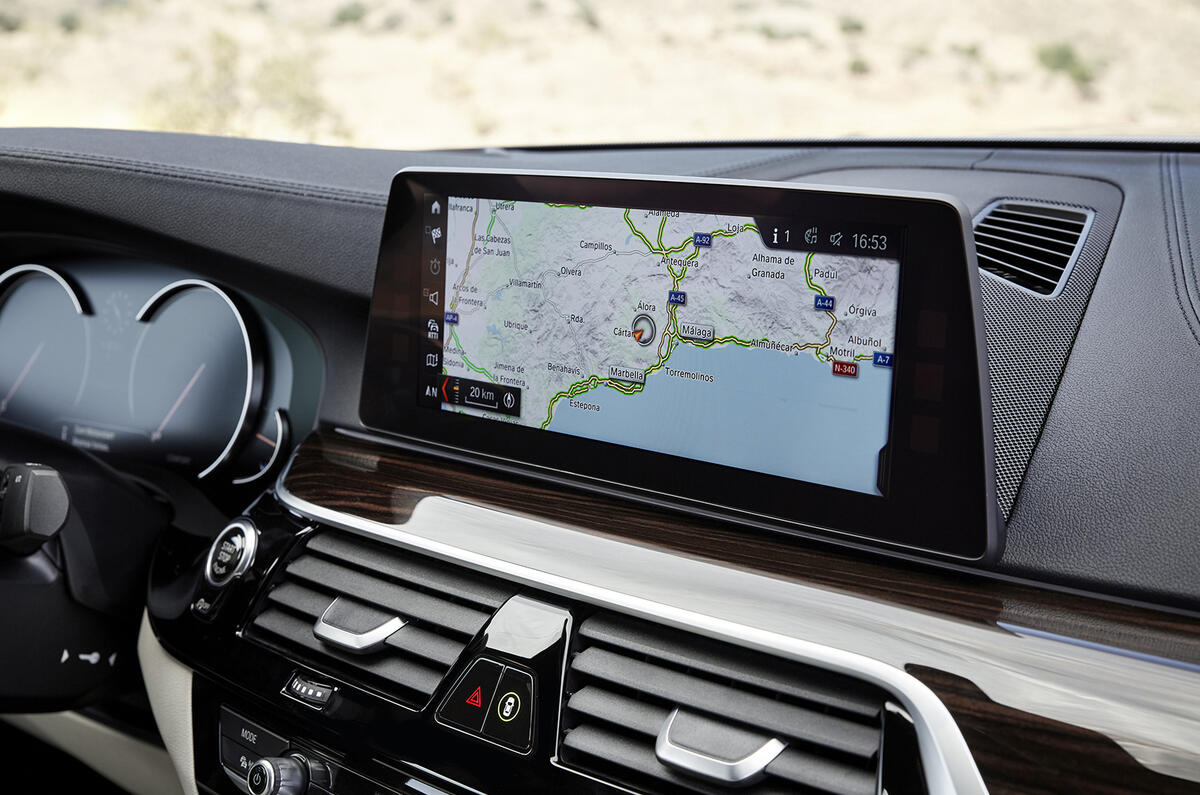




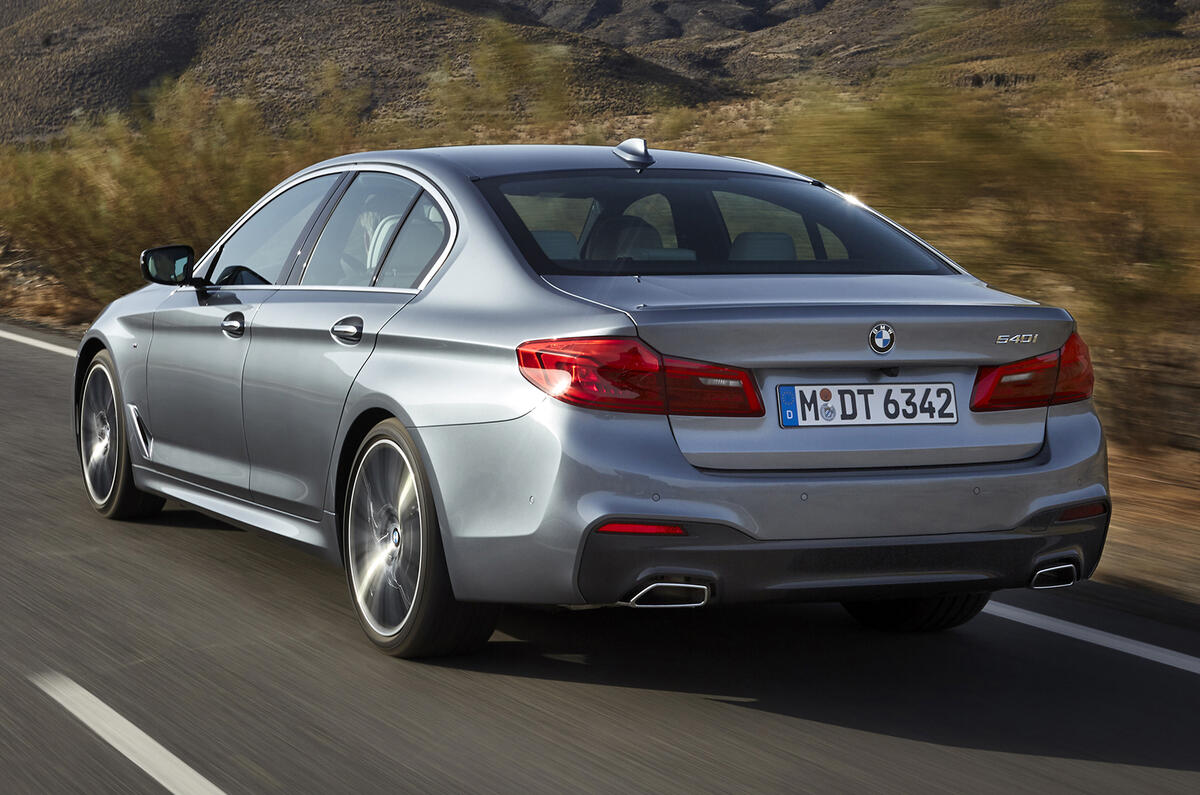
















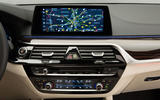



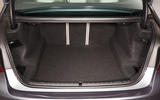



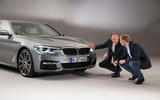













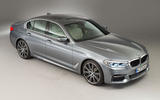


















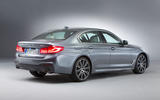



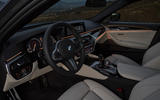












Join the debate
Add your comment
M550d xDrive - M67TUD44
The all-aluminium M67TUD44 was retired in 2009:
Capacity: 4423cc
Bore: 87 mm
Stroke: 93 mm
Power output: 242 kW; 330 PS; 326 bhp
Max torque: 750 Nm; 553 lb-ft
Models: E65 745d (LCI)
Produced: 2005-2009
Interestingly, the B57D30TOP is only 10 Nm stronger than the M67TUD44 which is/was (correct at the time of typing) the only all-aluminium V8 diesel engine in the world.
Marque Redeemer
Looks like a 5 Series
The one thing I don't understand is why BMW feel the need to follow the crowd with these silly screens that look like they're a stuck on afterthought.